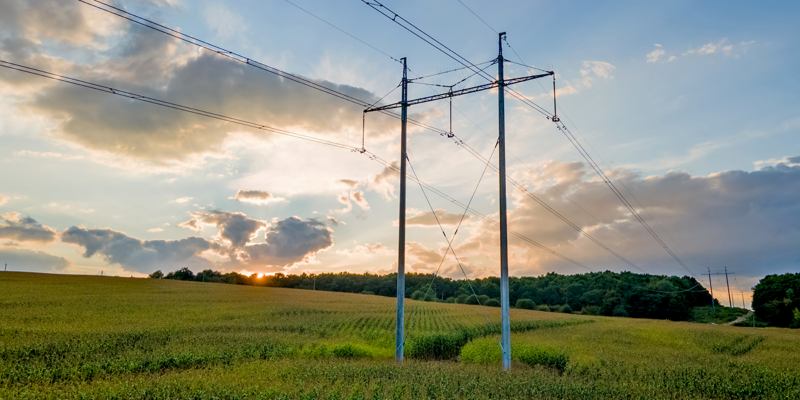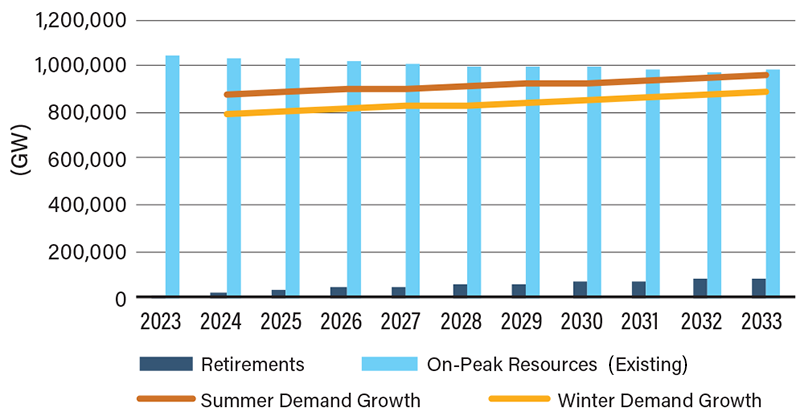Record Winter, Forecasted Summer Peak Demands To Stress Grid

It’s that time of year when reliability of the electric grid looms large as increased summer peak demand approaches. In January, the Texas grid experienced three winter peak demand records, with the highest topping 78 GW. The Electric Reliability Council of Texas called on consumers to conserve power twice, but did not implement any drastic measures as it did during Winter Storm Uri in 2021. The Tennessee Valley Authority also experienced a winter peak demand record in January of more than 34 GW. The demand for U.S. natural gas also hit record highs this winter with spot power and natural gas prices in New York and New England at their highest levels ever.
While reliability may differ by state and region during seasonal peaks, the U.S. grid is very reliable overall. Consumers lose power about twice a year for less than 5 hours on average, according to the National Renewable Energy Laboratory. However, the North American Electric Reliability Corporation (NERC) recently published its Long-Term Reliability Assessment for 2023, providing both a warning and an opportunity to plan for the future of the grid.
One of the main findings was that over the past decade, since 2012, the summer forecasted peak demand rose by 3% while the current on-peak bulk power system resource capacity fell by 4%. For the next decade, the summer peak demand is forecasted to increase by another 10% while resource capacity is expected to rise by 4%.
“There is a mismatch between the resources being added to the grid and the forecasted peak demand,” CFC Senior Analyst Alisha Pinto said. “In NERC’s assessment, the regions of the Midcontinent Independent System Operator, Tennessee, parts of Georgia, Alabama, Mississippi, Missouri and Kentucky are high-risk areas without adequate resources to meet forecasted demand over the next 10 years.”
Existing Resource Capacity, Retirements, Peak Forecasts

SOURCE: NERC LTRA 2023.
In the past, the grid has had very predictable demand growth. That is changing with advances in technology on the industrial, commercial and residential fronts. These changes stem from the electrification of transportation and growth of electric vehicles; the emergence of new loads such as data centers and cryptocurrency mining; and the electrification of heating systems and other applications that relied of fossil fuels. The grid is also expected to have dual peaking, i.e., demand peaks in summer and winter seasons.
On the supply side, the electricity generation mix is changing. Some fossil fuel and nuclear power plants are approaching the end of their operational life while others are being retired early. There is an estimated 83 GW of retirements anticipated over the next decade. At the same time, intermittent renewable energy, such as solar and wind, are the fastest-growing capacity additions to the grid.
Interruptions due to lack of supply of electricity or failures of generation or transmission on the bulk power system typically cause less than 5% of the total duration of all outages. Extreme weather events, like ice storms, extreme heat and hurricanes, can lead to higher demand and at the same time cause power plant failures.
“Reliability will be a challenge only if these new conditions remain unaddressed,” Pinto said. “There are several opportunities to ensure reliability in the future. Adequate and updated resource planning will be key to addressing the changes in the system and finding new solutions.”
Utilities will need to improve their transmission networks to support the changes to generation and distribution mixes. Interregional connections can provide greater stability and optimize the use of resources across different time zones. More traditional sources, such as natural gas power plants, can help utilities assess their reserve capacity based on growth in peak load and strengthen their resilience to extreme weather events.
“Short- and long-duration energy storage, such as batteries, could stabilize the grid during peak demand hours and potentially help shave off-peak demand,” Pinto said. “At the distribution level, demand-response technologies such as smart thermostats, demand-response programs and virtual power plants can shift loads to reduce peak consumption. Timely action on multiple fronts can secure the future reliability of the grid.”
